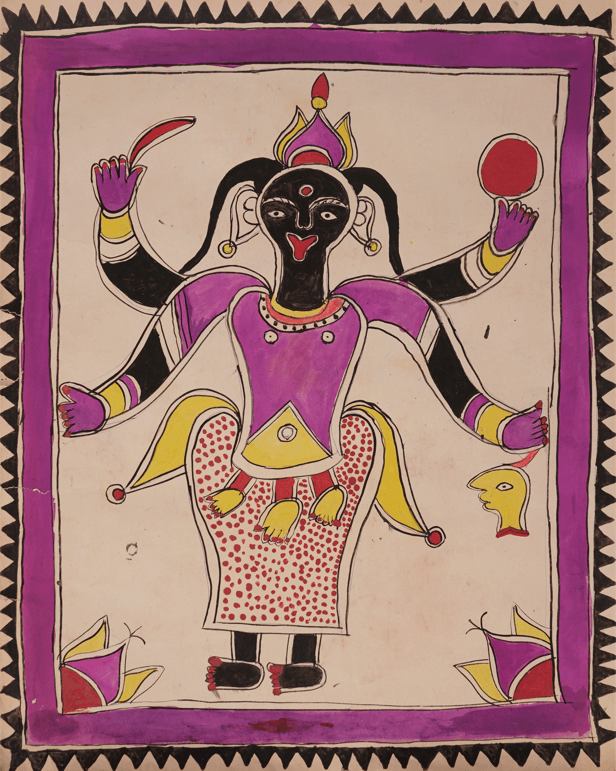BAACHI DEVI, MANJULA
DEVI THAKUR, AND
PALATI DEVI
Courtesy of the artists and Claire Burkert

Mithila art was primarily a mural-based tradition practised by women in villages and passed down matrilineally. Clay, cow dung, and husk were used to create a mixture that was applied on earthen walls; various patterns, animals, and mythological characters were then shaped and painted. In Janakpur, this artform witnessed a transition in 1989 when icons and images were transferred from walls onto paper. A similar and earlier trend was also observed in Bihar with the tradition of Madhubani painting.
Baachi Devi, Manjula Thakur, and Palati Devi were among the frst artists to work for the Janakpur Women’s Development Center, an organisation that employs and sells the work of female Mithila painters. These artists came from adjoining villages of Janakpur and from di ferent caste groups. These series of works illustrate an in fection point for Mithila paintings. In its early years, artists used rudimentary principles of designs, a bright yet limited colour palette, and focused on bold singular fgures, which were more rooted in the Mithila region's idiosyncratic image-making dialect. Over the years, such works have changed to include more secular narratives, varied colours, and social issues catering to Nepal’s NGO sector.
Location Map

Designed & Developed by: Curves n' Colors | Visual identity by: Wkshps
